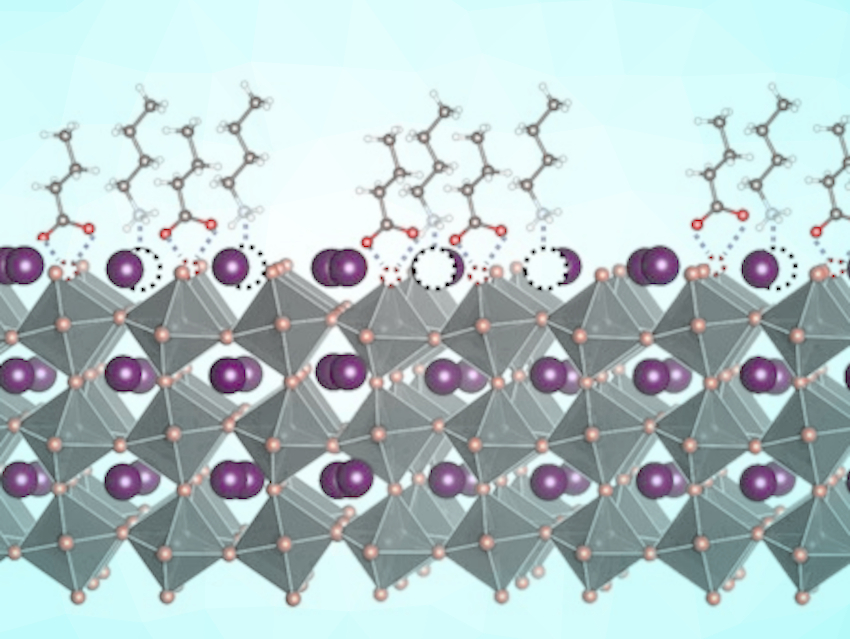Halide perovskite solar cells combine low fabrication costs with high power conversion efficiencies (PCEs), reaching up to 25.5 %. However, surface imperfections induced during fabrication can lower the devices’ performance and stability.
Nripan Mathews, Nanyang Technological University, Singapore, and colleagues have used a class of all-organic salts consisting of alkylammonium and alkanoate ions as surface modifiers for perovskite solar cells. The team chose salts with equally long alkyl chains on the ammonium and carboxylate components, such as butylammonium butanoate (BAB), octylammonium octanoate (OAO), and hexadecylammonium hexadecanoate (HDAH).
These organic modifiers passivate the surface and grain boundaries of the perovskite (pictured), which leads to a more hydrophobic nature and improved moisture tolerance. The researchers found that carboxylate anions have a higher resistance towards oxidation than previously explored passivators based on iodide salts. Devices fabricated with the developed surface modifiers showed significant reductions in the recombination losses, enhanced open-circuit voltage, and unchanged short-circuit current density. Using BAB as a surface modifier, PCEs of more than 18.5 % were achieved, and unencapsulated devices retained more than 80 % of their initial efficiency over 1500 h.
- Effects of all‐organic interlayer surface modifiers on perovskite solar cells efficiency and stability,
Japheth Joseph Yeow Wan Foong, Benny Febriansyah, Prem Jyoti Singh Rana, Teck Ming Koh, Darrell Jun Jie Tay, Annalisa Bruno, Subodh Mhaisalkar, Nripan Mathews,
ChemSusChem 2021.
https://doi.org/10.1002/cssc.202002831



